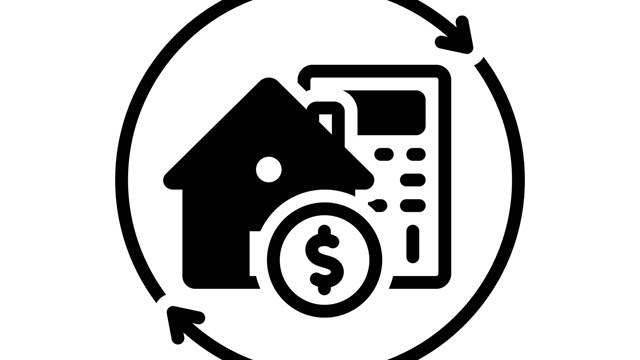A taxpayer normally recognizes gain or loss realized on the sale or exchange of property. However, pursuant to Section 1031 of the tax code, there is no recognition of gain or loss on the exchange of property for like-kind property.
Like-kind property is property that is not a primary residence and that which is classified as an investment or used for business purposes. Like-kind property must be of the same nature or character rather than the same grade or quality. Exchanges of personal property must be nearly identical.
In this type of transaction, however, the taxpayer must hold both the property transferred and the property received, either for productive use in a trade or business, or for investment to qualify for the tax-free treatment.
Generally, the basis of property acquired in the exchange is - with certain modifications - the same as the basis of the property transferred. Since the old basis is substituted as the basis of the acquired property, there is in effect a deferral of the original gain until some time in the future when the acquired property is disposed of in a taxable transaction. If the like-kind exchange involves depreciable property, the acquired property will be depreciated based upon the substituted basis, which could result in lower depreciation deductions than the ones available if the property was purchased outright.
There are two ways that depreciable tangible personal property can satisfy the like-kind requirement. An exchange for property of a like-kind, e.g. a truck for a truck, or an exchange within the same general Asset Class or Product Class (as defined by the tax code regulations), are permitted. Other personal property must be exchanged for like-kind property in order to qualify for the nonrecognition provision. A like-kind exchange could be consummated with a condominium apartment, a single- or multi-dwelling family house, or even a co-op, but there might be some restrictions in doing so under state law and co-op transactions are subject to board approval.
Real property, in contrast to personal property, qualifies as like-kind to other real property regardless of how dissimilar the properties are. Real property and personal property are not the same class or kind of property. Real properties that have qualified as like-kind include: city real estate for a ranch or farm; improved real estate for unimproved real estate; real estate for a leasehold with 30 years or more to run; timberland with reservation of timber cutting rights for state-owned timberland; or an apartment building for vacant land plus golf course improvements. However, real property located in the United States and real property located outside the United States are not like-kind property. Section 1031 treatment is not available for exchanges of partnership interests, securities, inventory and choses in action, even if the property exchange is of a like-kind nature and all the other requirements for like-kind are satisfied.
If an exchange which otherwise is within the provisions of Section 1031 but for the fact that the property received consists of qualifying property and other property or money the exchange is partially tax free. Gain is recognized to the extent of "boot" (the fair market value of any unlike property or money received). Whenever an exchange provides debt relief, (e.g. transfer of real estate subject to a nonrecourse mortgage), the amount of the liability is treated as boot received by the debtor. However, if a like-kind exchange involves the reciprocal transfer of property subject to mortgages the amount of debt relief may be offset by the amount of debt assumed.
While like-kind exchanges need not be simultaneous, there is a strict time frame in which the transfer must be completed. The property to be received in a deferred exchange must be identified by a written document within 45 days of the transfer of the property given up. Furthermore, the exchange must be completed no later than 180 days after the first transfer or the due date of the transferor's tax return - whichever is earlier.
A taxpayer can identify more than one property, but regardless of the number of relinquished properties he transfers, the maximum number of replacement properties he can identify is three. And this can be done without regard to the fair market value of the properties. Or he can transfer an unlimited number as long as the properties' aggregate fair market value at the end of identification period does not exceed 200 percent of the aggregate fair market value of all relinquished properties.
In the case of a transfer of relinquished property in a deferred exchange, gain or loss must be recognized if the taxpayer actually or constructively receives money or other property before actually receiving like-kind replacement property. Furthermore, if the full amount of the consideration for the relinquished property is actually or constructively received before the like-kind property is received, the transaction is considered a sale rather than a deferred exchange, even through like-kind property is ultimately received.
Regulations have established four safe harbors that, if met, will avoid the determination that a transferor has actually received money or other property.
Security or Guarantee Agreement: There is no constructive receipt of boot solely because the obligation of the other party is secured or guaranteed by a mortgage or other security interest; an outstanding letter of credit that the transferor cannot draw on except upon default of the transferee's obligation to transfer property; or a guarantee of a third party.
Qualified Escrow Accounts and Qualified Trusts: An account or trust in which the escrow holder is not the transferor or a disqualified person, (e.g. an agent of the transferor) and the escrow or trust agreement expressly limits the transferor's right to receive, pledge, borrow, or otherwise obtain the benefits of the transferee's cash, etc.
Qualified Intermediary: Using a middleman who is not the transferor's agent to facilitate the exchange. Again the transferor is prohibited from receiving, pledging, etc. the cash held by the intermediary. Pursuant to the terms of the agreement, the intermediary acquires the relinquished property from the taxpayer, and then transfers the relinquished property, acquires the replacement property and transfers the replacement property to the taxpayer.
Interest and Growth Factors: A transferor of property in a like-kind exchange may want compensation for loss of use of the property, or income, between the time that the property is relinquished and the time that the replacement property is received. There is no constructive receipt simply because the transferor is entitled to receive any interest or growth factor.
After all the technical terminology and abstruse financial wrangling, the bottom line is, of course, "How would this work in real life?" By way of explanation, let's say a client wants to sell a commercial building that would generate substantial cash proceeds as well as a substantial income tax obligation. The client is in the process of expanding its retail operation, and over the next six months anticipates opening several additional outlet stores. Working together with management, legal counsel and real estate counsel, they develop the following plan, which substantially eliminates the tax obligation arising from the sale.
Enter into an agreement with a title company that acts as a qualified intermediary in the transactions.
The title company arranges for the sale of the building and holds all the sales proceeds.
ôhe client designates "x" number of outlets as the replacement property. The replacement property consists of fee interests or 30-year or more leaseholds in new store spaces or existing store spaces including certain stores operated by others.
The title company acquires "x" outlets, which are then transferred to the client to complete the exchange. Remember it is important to time these transactions so that the time between the closing of the sale and the closing of the last acquisition is within 180 days.







Leave a Comment